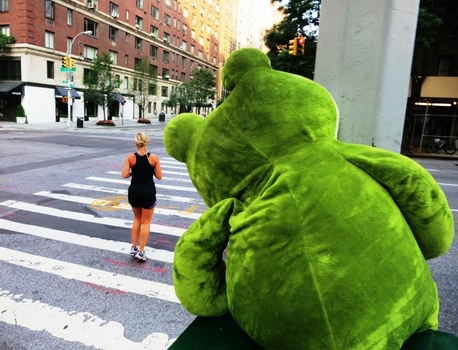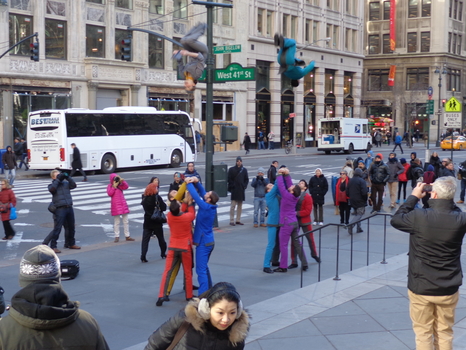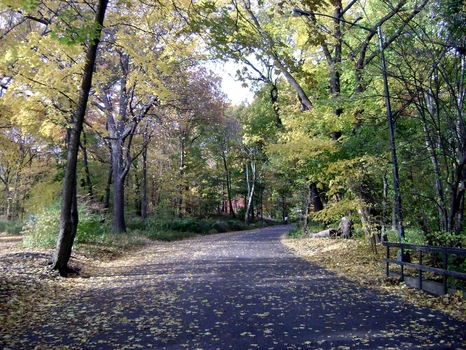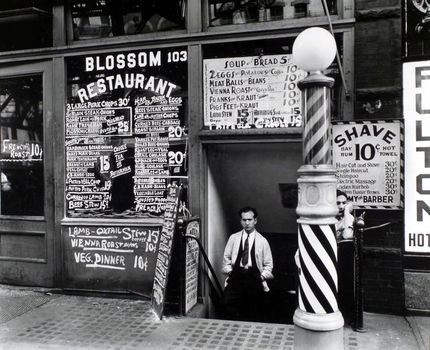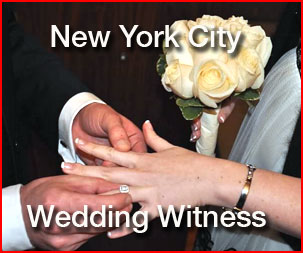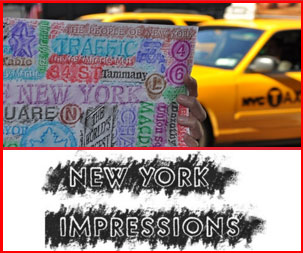by Bill Millard
BY NOW, EVERYONE from the Lower East Side to Lower Slobbovia has heard that CBGB’s is in trouble. The renowned birthplace of punk rock won a key court decision over disputed back rent but still lost its lease at the end of August; the leadership of the homeless organization that owns its building, the Bowery Residents’ Committee, has refused to negotiate a new one. Benefits and rallies have made it clear how much support Hilly Kristal’s club has from local musicians, artists, fans, and community leaders. At this writing, CB’s is still operating, lease or no lease.
But there’s no way of knowing, by the time you read this, whether the landlord will have shuttered the club (this could easily get ugly; fans are determined and numerous, and the spotlight has grown bright) or finally come to his senses and come to the table with Kristal, under strategic pressure from local advocates and national-level celebs (Little Steven Van Zandt has been particularly stand-up in defending this legacy). Maybe the courts will decide. Maybe the city will landmark the place (sensible but unlikely, since gaining landmark status is a slow process). Maybe there’ll be a brutal incident and a door slammed hard on musical history.
You’ll notice that I make no attempt to be objective about this contentious topic. I have a dog in this fight, or actually two: I’m both an East Village neighbor and a musician. I’ll always be on the side of more performance spaces, more of the places that make certain parts of New York a worldwide magnet for creative people and appreciative audiences. Unruly culture centers like CBGB’s make this city something more than a dense collection of increasingly overprivileged people, unaffordable apartments, and impressive but insufferable restaurants. It’s hard to see lots of people visiting or moving here for that. (And it’s hard to see Hilly taking the bait that’s reportedly been offered, moving the club to Las Vegas, and embalming it in nostalgia.)
Requiems for some rooms, reprieves for others
What observers outside NYC may not realize is that the situation at CB’s is just one highly exposed tip on top of a big, nasty iceberg. Some of the city’s best musical venues have been going under. The Fez, a quirky-looking, great-sounding club in the basement of the Time Café on Lafayette Street, was unceremoniously axed from the restaurant’s renovation plans. The Luna Lounge, beloved by local bands for its musician-friendly atmosphere and high-quality sound mixes, is gone, turning into luxury housing. The Nightingale was a solid rock ‘n’ roll dive for years, the sort of space that launched a thousand new acts; it’s now a slicked-up bar with no live music. The Lone Star Roadhouse and the Ritz, longtime standbys for national touring acts, are mere memories. Likewise NYU hangout The Elbo Room, midtown’s Le Bar Bat, and Wetlands (though the latter has morphed into an online eco-activism center).
Turnover is inevitable in a large music scene, and the news isn’t always grim. Some clubs have risen from the ashes: there are new expanded quarters for the Living Room on Ludlow, practically around the corner from its old digs at Stanton and Orchard, and for Sin-é on Attorney Street, formerly on St. Mark’s. The C-Note, a cramped but beloved little bar in Alphabet City, soldiers on despite rumors of impending closure. Tonic and the Knitting Factory have held on and continued to book challenging music even in the face of financial troubles. Continental, another punk-rock shrine, is as constant as the North Star.
New spots pop up, and with them new scenes: an upbeat mix of boho rock, hip-hop, and global surprises at the Bowery Poetry Club, new frontiers for indie rock at Brooklyn’s Northsix and Galapagos and Warsaw. Arena-scale national acts will always have Madison Square Garden, and mid-sized audiences continue to pack Irving Plaza and the Beacon Theater. (And in looking at NYC rock, we haven’t even touched on jazz yet. More on that somewhere down the line.)
There are more places to play and hear great music here than anywhere else in the U.S.; there have always been and probably always will be. But the overall trend isn’t positive. This should surprise people, and maybe even (to paraphrase John Cleese) cause a bit of unrest.
Talent’s a constant; infrastructure’s a variable
From a distance, through media eyes, New York rock has looked pretty healthy for a few years, with new-wave-ish bands like the Strokes, Interpol, and the Yeah Yeah Yeahs* drawing attention back toward music made by human hands, played on guitars and drums rather than samplers. If a city can be said to have a signature sound (and if a city this big and diverse can have just one), NYC’s is a tough, angular version of basic garage rock, sometimes filtered through a year or three of art school, sometimes wildly overdressed.
That’s been the case since the days when Tom Verlaine, Joey Ramone, Debbie Harry, and David Byrne all sprang fully-formed from Hilly Kristal’s forehead (or was it Lou Reed’s? Creation myths always come in multiple versions). The three-way tension among street grit, smart art, and fashion glitz is the air that a lot of New Yorkers breathe. This means the same broad scene can support the grungy energy of the Mooney Suzuki, the noisy avant-garde virtuosity of Elliot Sharp, the slinky ethno-techno of the Brazilian Girls, the “Country and Eastern” eclecticism of Church of Betty, the Slavo-Gypsy thrash-folk of Gogol Bordello, and the campy theatricality of Fischerspooner. (Not to mention the ceaseless reinvigoration of the scene by relatively unknown but incredibly promising bands like, say, this one.)
The problem isn’t a shortage of talent. People with that end up here pretty consistently. It’s got more to do with infrastructure and economics. In the current real-estate bubble, selling or renting housing to the deep-pockets crowd is so much more profitable than hosting the arts (or practically anything else) that landlords all over town have decided to cash in. Those whose tenants are music venues may or may not care that when they extract the maximum commercial value from their own property, they also chip away at the general cultural atmosphere that’s had so much to do with making NYC property valuable in the first place.
One of the worst blows, not only to NYC’s scene but to the whole recording industry, came last spring when the Hit Factory — a studio for which “legendary” is a drastic understatement — closed its doors on West 54th Street and consolidated its operations at its Miami branch. This is the place where the halls were covered ceiling-to-floor in gold and platinum records, the place where John Lennon, Bruce Springsteen, Stevie Wonder, and other giants did some of their best work. Speculations about this place’s demise as a reflection of the generally poor state of the music industry, in the era of the home digital studio and the iPod, tell only part of the story. While recording facilities elsewhere have had trouble filling their calendars, the Hit Factory’s seven state-of-the-art rooms were booked solidly right up to closing day last March. Insiders attribute the decision not to weak business at all, but to the owners’ desire to cash in on soaring midtown real estate values. The studio’s much-respected longtime owner, the late Ed Germano, is reportedly spinning in his grave at a rate considerably faster than 33 rpm.
The artists are still here; they always have been. Scenes shift their centers of gravity, and neighborhoods like Brooklyn’s Williamsburg — a low-rent outpost a decade or two ago, today one of the city’s focal points for both creative people and the hipster-faker-trendies who inevitably pop up in their wake — have absorbed some of the musical crowds that were once denser on the Lower East Side. If yuppiedrome construction is a sign that a neighborhood and its scene have passed their sell-by date, some locals would tell you that “Billburg” is already old news, looking further out in the outer boroughs toward Long Island City and Astoria in Queens, or even the once-forbidding South Bronx.
Wherever the clubs appear and disappear, rock and all sorts of hybrid-rock styles are right at home here. New York’s energy makes rock ‘n’ roll not just possible but necessary. This is the place where some performers come to break out, others manage to carve out a steady-state existence, and others come to die. Whether New York’s developers and landowners understand the place of vibrant music in the city’s cultural mosaic, and decide they’d like to advance it or impede it, remains an open question — with a new answer every time another lease comes up for renewal.
– – – – – – – – – –
[*Warning: the Yeah Yeah Yeahs’ website finds a new way to be punk in the obnoxious sense of the word: its code makes some browsers jump all over the screen as if they had St. Vitus’s dance. If you can catch the “back” button as your monitor appears to be turning rabid, you can get your computer out of this condition with no long-range ill effects.]
Writer/editor/musician Bill Millard is editor-in-chief of the new East Village Guide. His articles on culture, architecture, and politics have appeared in Content, Icon, and other magazines; he also plays, sings, and writes with rock band Shanghai Love Motel.


